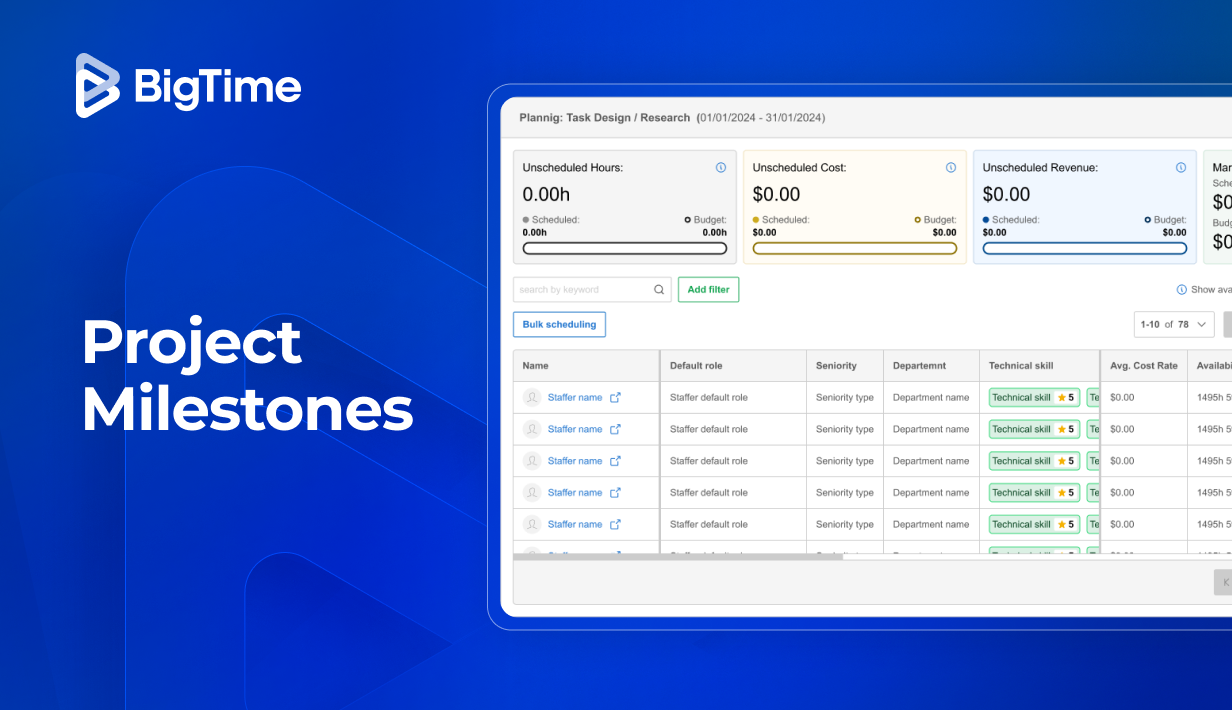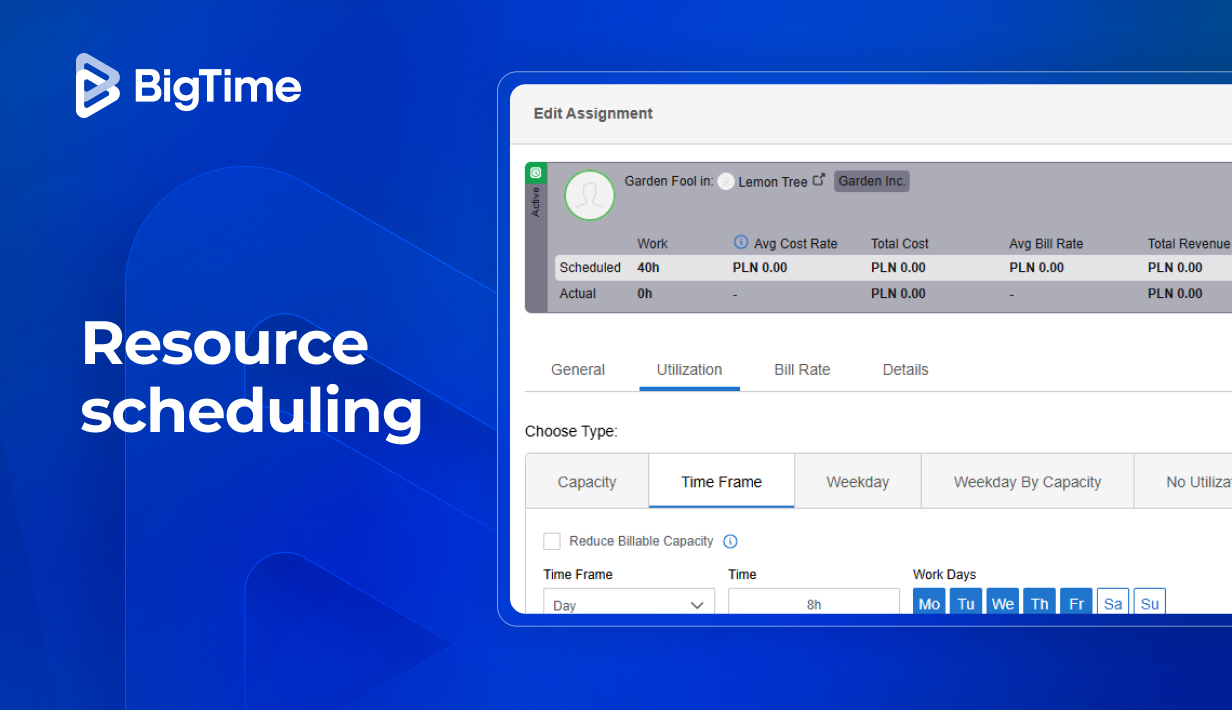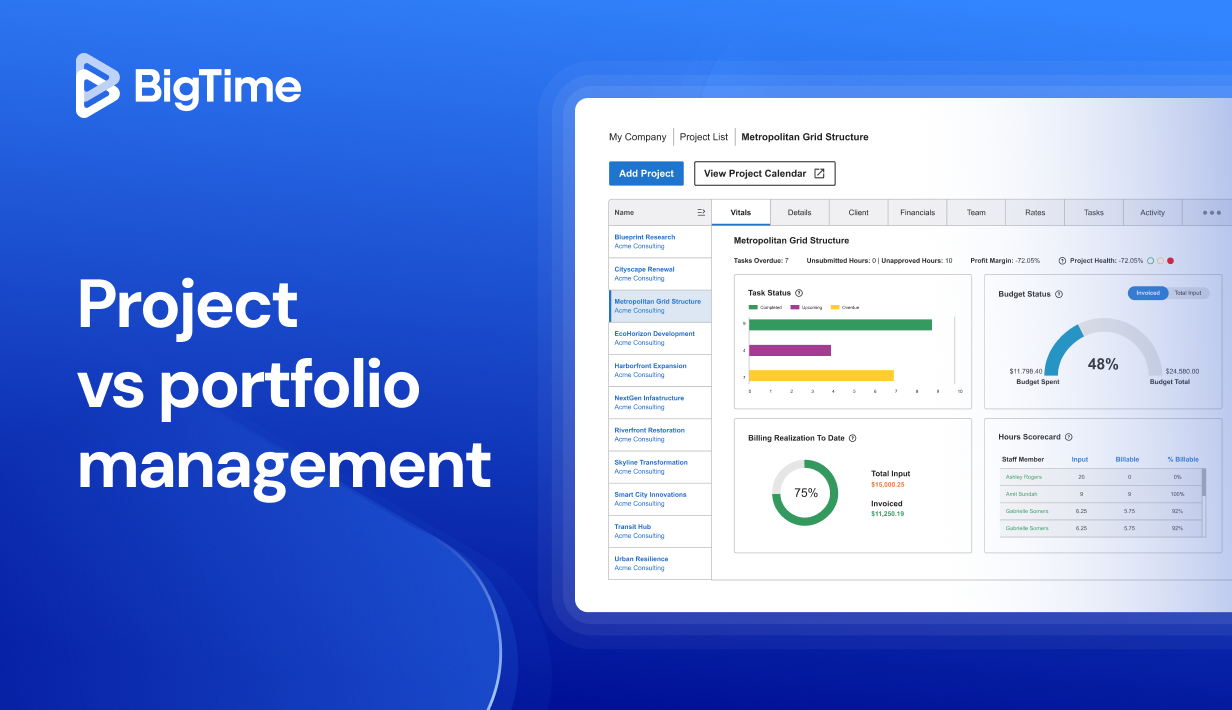Every project has key deliverables that can make it or break it – along with the relationship with customers. Still, with dozens of independent factors at play, monitoring these key project phases might be challenging. Choosing the right project milestones changes that.
In this article, you’ll find:
- The definition of project milestones.
- The examples of project milestones.
- The best method of identifying project milestones.
- The perfect milestone planning process.
- The best tools that can help project managers track project’s progress.
What is a Project Milestone?
Project milestones in project management are markers or signs of a goal being completed. Sometimes misplaced for a task, milestones should be reserved for things that show significant progress or ensure a project is on schedule, as they represent the completion of major phases, key project deliverables, or critical decisions
Milestones are also the best way to communicate progress to outside stakeholders and keeping the entire team on the same page. Instead of letting them know a list of tasks that you checked off you can communicate the goal that was reached at the end of each project phase.
Why Are Project Milestones Important?
Project milestones are essential because they help the whole project team track progress while being on the same page at all times. Instead of getting lost in a long to-do list, milestones highlight the major points that show your project is moving forward, clearing the most efficient critical path towards fulfilling project goals. They also make it much easier to share updates with leadership, since milestones naturally focus on what really matters at a high level.
Beyond that, milestones help manage risk and improve accountability. They act as built-in checkpoints where you can pause, reassess, and make smart decisions before jumping into the next phase. Additionally, by tying each milestone to clear responsibilities and deadlines, it’s easier to stay on track and ensure that nothing important slips through the cracks.
How To Identify Project Milestones?
First, break your project down into smaller, manageable tasks. This initial step gives you a clear view of everything that needs to be done and helps you organize your work in a logical sequence.
Once you have your full list of tasks, look closely at each one and ask: Is this step crucial to the success or progression of the project? If the answer is yes, then you’re likely looking at a potential milestone.
Remember that milestones represent key achievements or turning points; not just any task, but the ones that indicate real progress or require special attention. For example, completing a design prototype, getting client approval, or finishing a major development sprint could all be considered milestones. These are moments where something significant changes or moves forward in the project.
Finally, remember that a project life cycle is a living organism prone to changes. Be prepared to revisit and adjust your milestones as the project progresses. Priorities may shift, new risks could emerge, or timelines might change – and so do your project goals.
How many milestones should my project have?
There’s no one-size-fits-all number when it comes to project milestones. The right number will vary depending on the size, scope, and complexity of your project. However, a helpful rule of thumb is that milestones should never outnumber tasks. If you find that happening, it’s a strong sign that some of what you’ve labeled as milestones are actually just regular tasks.
Project Milestone Examples
Phase-Based Milestones
Phase-based milestones mark the transitions between major stages of the project lifecycle. These points provide structure to the timeline and serve as checkpoints for reviewing progress. Typically, we can divide the examples of phase-based milestones into four categories:
Initiation phase milestones – examples
- Assembling a project team
- Identifying all the relevant stakeholders
- Completed feasibility study
- Project kickoff meeting
- Getting all the approvals for the initial project evaluation.
Planning phase milestones – examples
- Defining the project scope
- Creating or approving project budget
- Developing a risk management plan
- Creating a project schedule or a project plan
- Getting approvals for key documents
Execution phase milestones – examples
- Starting the execution phase
- Delivering main parts of the project
- Completing a development sprint
- Completing critical tasks
- Achieving project goals
Closure phase milestones – examples
- Final deliverable accepted by the customer
- Project retrospective completed
- Final project evaluation completed
Deliverable-Based Milestones
As indicated by their name, the deliverable-based project milestones mark the completion of major outputs or deliverables. They’re often used to measure concrete progress and ensure alignment with the project scope.
The examples of deliverable-based milestones can include:
- Developing the first prototype of the product/solution
- Developing one of the key features
- Developing a minimum viable product
- Launching the product
- Delivering final report
Approval Milestones
Approval project milestones were designed to ensure that all the stakeholders monitor the project and are aware of its goals and current status. These signify that a key decision or sign-off has been granted, often by stakeholders, executives, or clients. They’re critical for project governance and quality control.
The examples of these project milestones include:
- Project scope approved
- Final budget sign-off
- Regulatory compliance confirmed
- Client sign-off on design
Dependency-Based Milestones
Waiting for something out of your control to happen to continue working on a project? You likely have a dependency-based milestone on your hand. These depend on external or preceding tasks and often dictate when future phases or activities can begin. They can include:
- API delivered by third-party vendor
- Server environment provisioned
- Legal contract finalized
- Data migration completed
Once your goals, task list, dependencies, and milestones are set in that order you’ve got the perfect recipe for a successful project.
What Is Milestone Planning?
Milestone planning is the process of scheduling the key events or checkpoints that represent major progress moments in a project. Rather than focusing on every individual task, milestone planning emphasizes critical outcomes that help assess whether the project is on track.
This planning method allows project managers and stakeholders to structure timelines around high-impact goals, align teams around shared expectations, and monitor progress efficiently. Milestone planning also supports better risk management and decision-making by establishing natural review points where adjustments can be made before moving forward. It’s a vital part of any successful project strategy, helping ensure clarity, focus, and momentum throughout the lifecycle of the project.
What Is a Milestone Chart?
A milestone chart is a visual representation of all the key milestones along a project timeline. Milestone charts help project stakeholders and managers and teams see at a glance where major events fall, how they relate to the overall schedule, and whether the project is on track.
Typically presented in a form of Gantt charts, these charts are useful for executive reporting, stakeholder presentations providing high-level view of project execution milestones without overwhelming detail. Still, their efficiency hugely depend on its format.
Milestone charts for the entire project displayed in Excel spreadsheets tend to be unscalable and difficult to interpret, making it more difficult for project managers to achieve their goals. Other project management tools – including BigTime – might streamline the creation of such reports, minimize errors, and provide a complete overview of every completed project phase in seconds.
Tools for Tracking Project Milestones and Dependencies
There are many tools and techniques available for tracking and communicating project management milestones and dependencies. One popular tool is a Gantt chart project management software, which provides a visual representation of your project tasks, dependencies and milestones altogether. After gathering your lists, Gantt charts allow you to set up your project in a bar timeline to get a clear, big-picture view of the project roadmap and the amount of time that will be needed to complete the project.
Another useful tool is project management software, which can be used to track tasks, assign responsibilities, and set deadlines. Using professional services automation (PSA) can provide your company with the resources and reporting needed to get projects and payments completed on time.
Creating Project Milestones is Simple in BigTime
All of those features – and many more – can be found in BigTime.
Setting up a project timeline in BigTime
BigTime is a comprehensive project management software that has everything you need to monitor your project: from project timeline and goals, to major progress points. This tool bridges the gap between resources, finances and project plan, providing project managers with a complete overview of key deliverables. It can help you:
- Map all the critical tasks and create a project schedule with maximum accuracy and a complete overview of all the potential costs.
- Allocate the right people to the project in seconds without a single error – we’ll notify you when we identify one!
- Monitor the execution phase, compare it to the initial project plan, and do the same for the project budget. It can also visualize project milestones for you!
- Create advanced reports for all the key metrics in seconds with a little help from our AI modules.
Book a demo now or start a trial with BigTime’s project management tool to see how we can transform your project planning milestones into project success!




